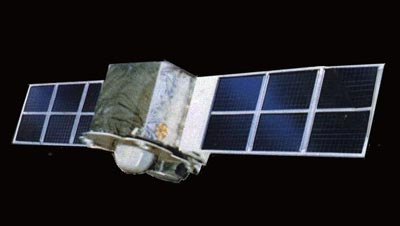Strategic deception and the Chinese military space programby Nader Elhefnawy
|
| It is conceivable that the brash, provocative actions China has taken over the last year, which did anything but mask Chinese capability, are motivated by a desire on the part of China to instead mask its comparative weakness. |
This report was followed up just a month later by Deputy Undersecretary of Defense for Asian Security Richard P. Lawless testifying before the House Armed Services Committee that there is a “deliberate effort on the part of China’s leaders to mask the nature of Chinese military capabilities.” Where military space activity is concerned, such thinking has been encouraged by Chinese actions over the past year—its use of a laser on a US satellite, its antisatellite missile test in January—and has already contributed to greater spending on military space programs such as space situational awareness. (See the Defense News article “China Sat Test Spurs U.S. To Boost Space Spending”.)
On the face of it, this all seems plausible enough, but it should be remembered that it is easy to make too much of the idea of a menacing Chinese strategic culture of deception. It plays into simplistic stereotypes about Eastern and Western strategic cultures that obscure far more than they reveal (a problem incisively examined in an article by Patrick Porter in the Summer 2007 issue of the U.S. Army War College Quarterly Parameters). While China’s dictatorship may be more opaque than many other governments, the reality is that institutional politics and government secrecy exist everywhere, and China certainly has no monopoly on deception, least of all in this realm. Indeed, the US’s own red lines regarding Taiwan were deliberately ambiguous between 1979 and 2001.
In fact, another act of distinctly non-Chinese, Cold War-era strategic deception suggests a different rationale for China’s military space policies. Back in 1984, the US Army rigged a ballistic missile defense test to convince the Soviet Union that America’s efforts in this area had made much more progress than they actually had. The incident is worth remembering as a reminder that deception can work both ways, not just concealing capabilities, as China has been accused of doing, but concealing the lack of a capability.
This makes it conceivable that the brash, provocative actions China has taken over the last year, which did anything but mask Chinese capability, are motivated by a desire on the part of China to instead mask its comparative weakness. According to a report issued by the Federation of American Scientists and the Natural Resources Defense Council last November, Chinese Nuclear Forces and U.S. Nuclear War Planning, China’s nuclear arsenal may be considerably more limited than many Western experts believe.
On the conventional level, China still has an air force in which MiG-19 and MiG-21 knock-offs are the most numerous aircraft, an army in which locally produced versions of the T-54 still comprise the bulk of the inventory, and a submarine force built around Romeo-class vessels—1950s-era technology all. Moreover, even if its widening space surveillance capabilities and missiles, lasers, and jammers will enable it to target US satellites, China’s own numerous satellites are at least as vulnerable to attack by far more capable US forces—including presently operational electronic warfare units, and an array of US laser systems (like the Airborne Laser) which will be deployed in the years to come. Additionally, China’s overwhelmingly terrestrial counterspace forces would be susceptible to air and missile attacks by superior American forces.
| This possibility is especially worth considering since the trend in American history has been to overestimate the danger from potential opponents—often, far beyond what prudence, or even strategic pessimism, call for. |
In the end, the most that Chinese counterspace forces are likely to be for decades to come is a space age version of the old idea of the fleet in being, a “risk” force unable to win the war, but capable of deterring an enemy through the possibility that it will exact an unacceptable price for a victory. (See my article, “Four Myths About Space Power”). This, too, would not be unprecedented for Chinese policy, given that this is more or less the threat China can mount against Taiwan, which it is too weak to take by invasion (an assessment in which the Pentagon’s May report concurs), blockade effectively, or even beat down with non-nuclear missile strikes. Acts which send alarmists into a frenzy only enhance the credibility of such a strategy.
This possibility is especially worth considering since the trend in American history has been to overestimate the danger from potential opponents—often, far beyond what prudence, or even strategic pessimism, call for (a history examined by, among others, James Chace and Caleb Carr in America Invulnerable: The Quest For Absolute Security From 1812 to Star Wars). That pattern, if anything, makes it all the more likely that Chinese strategists would opt for such a course with respect to the United States. Despite their frequent caricature in the scholarship as obsessed devotees of Sun Tzu, it rarely occurs to commentators that they might be following Sun Tzu’s dictum of weakening an opponent by drawing American attention to a less relevant object, so as to leave the places where they really intend to strike unguarded—fixing US attention on Chinese military space capabilities, for instance, while making their real moves down here on Earth. China’s trade surplus with the United States, its amassing of vast reserves of foreign currency (dollars included) and financing of American borrowing, and its ability to combine its economic weight with the animosity of other states to US policies to form alliances, may all prove to be far more important than its antisatellite test in the long run.
